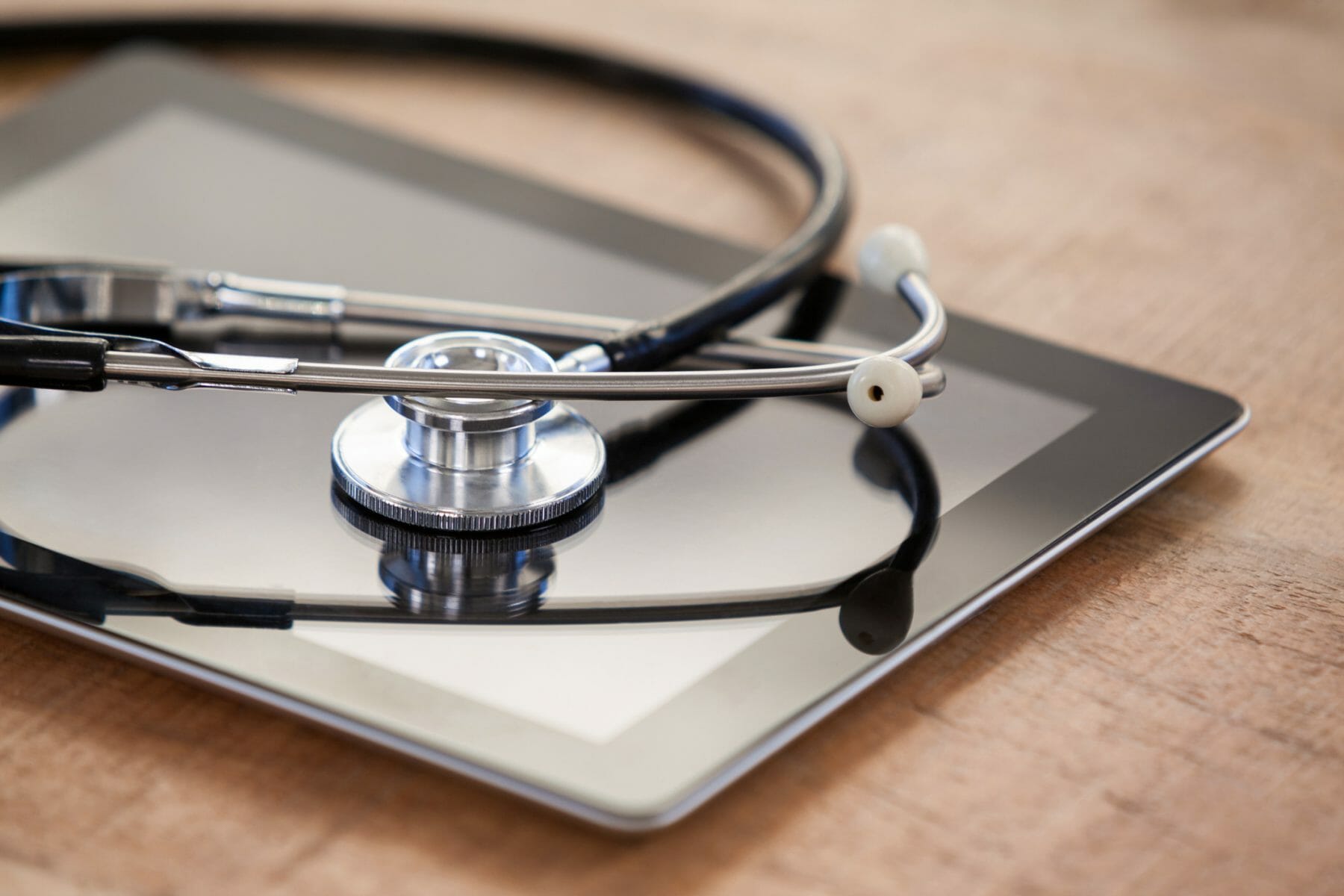
Articles
Editor’s Picks
Medical and Healthcare eLearning: Is it Effective?
By Sherman Morrison
March 08, 2018
Although eLearning has been embraced as an effective way to manage and distribute the training programs of businesses, schools and organizations across all sectors of society, there are still skeptics. This skepticism can be viewed as a good thing as it serves as a check on those who might otherwise blindly follow the trends rather than ask such hard questions as whether or not eLearning is truly effective. One of the areas where this debate is taking place is in medical and healthcare eLearning. Has eLearning proven itself to be an effective tool for doctors and other healthcare providers?
Defining Effectiveness for Medical and Healthcare eLearning
It’s important to first define what is being questioned in relation to medical and healthcare eLearning. It might be relatively easy to claim that eLearning is an effective way to educate healthcare professionals about various aspects of their profession, such as administrative procedures in any given hospital or other healthcare facility, but in the area of medical care there is an even more important question to consider: Is eLearning effective when the goal is seeking better health outcomes for patients? Taking the analysis in this direction is important because the overall goal of healthcare should be to continually improve patient outcomes. This is a much more difficult question to answer, but there have been studies conducted that attempt to shed light on the effectiveness of edtech software in this context.
Healthcare eLearning and Delirium Patient Outcomes
One recently-published study (source) designed a before-after experiment involving nurses in the geriatric ward of a university hospital. An 11-module eLearning program was developed with the aim of improving the nurses’ knowledge and recognition of delirium as well as patient outcomes around the prevention, detection and management of delirium. For both the nurses and patients, the statistical analysis showed no significant difference after completing the eLearning course. Disappointing results for eLearning advocates, to say the least. However, every study has its drawbacks and limitations, including this one.
 Digging deeper into the details, it turns out that the nurses who participated in the study already knew a lot about delirium since they all work in a geriatric ward to begin with. On the other hand, of the 11 modules in the eLearning program, only 6 were made compulsory, and most of the nurses only completed those 6 modules. As is often the case, a scientific study can raise as many new questions as those it tries to answer. If more of the nurses had completed all 11 modules, would the results have been different? But perhaps an even more important question not addressed in the study at all is the quality of the eLearning program developed. Nothing is said about that at all. In other words, a positive impact on patient outcomes might be beyond the reach of the eLearning program if it was a low-quality product. This single study is certainly not a good enough reason to draw any broad conclusions about the effectiveness of healthcare eLearning. It’s just one piece to consider in a much larger puzzle.
Digging deeper into the details, it turns out that the nurses who participated in the study already knew a lot about delirium since they all work in a geriatric ward to begin with. On the other hand, of the 11 modules in the eLearning program, only 6 were made compulsory, and most of the nurses only completed those 6 modules. As is often the case, a scientific study can raise as many new questions as those it tries to answer. If more of the nurses had completed all 11 modules, would the results have been different? But perhaps an even more important question not addressed in the study at all is the quality of the eLearning program developed. Nothing is said about that at all. In other words, a positive impact on patient outcomes might be beyond the reach of the eLearning program if it was a low-quality product. This single study is certainly not a good enough reason to draw any broad conclusions about the effectiveness of healthcare eLearning. It’s just one piece to consider in a much larger puzzle.
Healthcare eLearning Studies with “Positive” Results
Another recent study (source) had more positive results to report. In this case, healthcare professionals took an eLearning designed to improve their knowledge regarding a variety of infectious diseases and enhance problem-solving skills through the eLearning programs online case study environment. The average pre-eLearning knowledge score of the participating healthcare professionals was 47.8% while their average post-eLearning score was 82%, resulting in average increase of 34.2%. Sounds impressive, right? But these results have to be taken with a major grain of salt. For example, the study says nothing about the timeframe in which the post-eLearning assessment was conducted. Assuming it was soon after completing the coursework, it would be important to know how much of the improved knowledge gains are retained further on down the road. Is the knowledge retained long enough to actually implement it? And of course the biggest missing puzzle piece here is patient outcomes, which were not addressed at all, meaning there’s no way to tell from this study if the increased knowledge had any impact at all on the most important aspect of healthcare – improving patient outcomes.
The same problem can be found with a study of radiologists and breast imaging (source). In this case, however, it is blended learning that proved to be an effective way to increase the knowledge of radiologists. The blended learning program featuring both eLearning and traditional instruction was responsible for an increase in radiologist knowledge of 126% compared to their pre-program scores. What’s fascinating here is that a claim is made that blended learning is better than either eLearning alone or traditional learning alone, but the study as described didn’t statistically compare it to single-method learning programs, so it’s an empty claim. And once again, there is no link studied between increased knowledge and patient outcomes, which is the more important question to address.
A More Comprehensive Study of Healthcare eLearning
The several studies mentioned above serve to demonstrate how difficult it is to get at the most vital question of all – whether or not healthcare eLearning has a positive impact on patient outcomes. In part, this is still a very new line of inquiry, which means there aren’t all that many studies out there to evaluate. There are more that document an increase in knowledge among healthcare professionals, but they don’t make the link to patient outcomes.
 There is one other study that took a review approach, identifying multiple studies that were specifically designed to measure the impact of healthcare eLearning on patient outcomes (source). Even better, the people who undertook this review specifically sought out the Holy Grail of scientific studies: “Randomized trials assessing the effectiveness of eLearning versus traditional learning for health professionals.” This is the missing piece in many of the pro-eLearning articles – actually comparing the results achieved by different methods on the same topic, meaning there are two groups of health professionals, with one group learning by way of eLearning and the other group learning the same content through traditional learning. They were also smart in making the timeframe of learning assessment 12 months after completing the learning programs. The results of this particular study, however, are not encouraging for eLearning advocates. This review examined a total of 16 different high-quality studies that fit the randomized design criterion. There was little to no difference between eLearning and traditional learning regarding the skills or knowledge of healthcare professionals, nor was there any significant difference in patient outcomes.
There is one other study that took a review approach, identifying multiple studies that were specifically designed to measure the impact of healthcare eLearning on patient outcomes (source). Even better, the people who undertook this review specifically sought out the Holy Grail of scientific studies: “Randomized trials assessing the effectiveness of eLearning versus traditional learning for health professionals.” This is the missing piece in many of the pro-eLearning articles – actually comparing the results achieved by different methods on the same topic, meaning there are two groups of health professionals, with one group learning by way of eLearning and the other group learning the same content through traditional learning. They were also smart in making the timeframe of learning assessment 12 months after completing the learning programs. The results of this particular study, however, are not encouraging for eLearning advocates. This review examined a total of 16 different high-quality studies that fit the randomized design criterion. There was little to no difference between eLearning and traditional learning regarding the skills or knowledge of healthcare professionals, nor was there any significant difference in patient outcomes.
The Jury is Still Out on Healthcare eLearning
While the final study cited above is the most comprehensive examination of well-designed studies, it’s important to note that it could only find 16 studies. That’s still very few, and not enough to make any final judgement calls on eLearning’s overall effectiveness regarding healthcare, either in provider knowledge or patient outcomes. Also, although it’s not yet possible to claim that eLearning is better for patient outcomes, this should not be viewed as a reason to reject eLearning. It’s neither better nor worse for patient outcomes, but there are still many other advantages of eLearning over traditional learning to consider – the lower costs for remote learners, the ability for learners to engage it when and where they desire, the capacity to personalize it, and so on. The jury may still be out regarding healthcare eLearning and patient outcomes, but it’s still an attractive way to manage and distribute learning and training programs.









[…] I knew Lehi, UT rang a bell. Hometown of Ancestry.com [name redacted]. Also BYU prof overseeing research at MVP. https://news.elearninginside.com/edtech-flourishing-utah/ […]